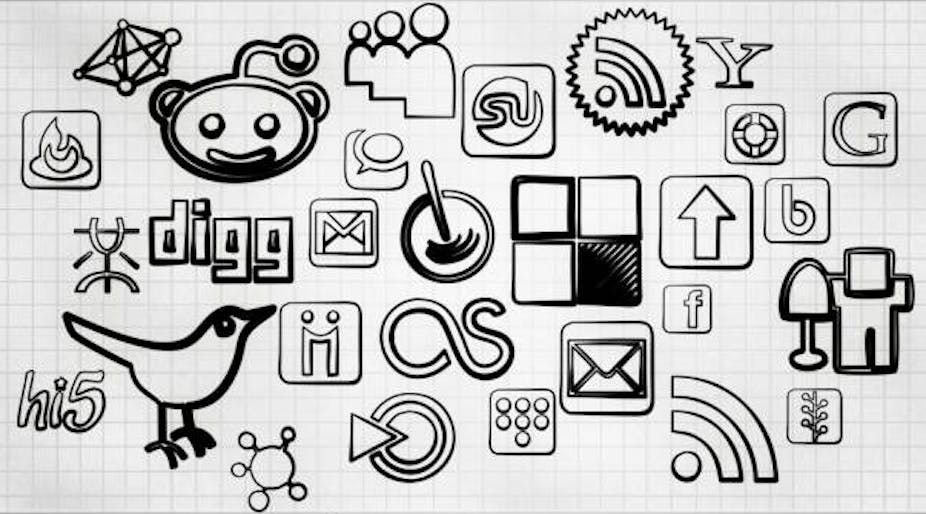This week, the American National Labour Review Board ruled to reinstate five workers fired for complaining about a co-worker on Facebook.
The board decided writing about work on Facebook was equivalent to talking about work in person – it was not inherently different just because it was via a social network.
This, of course, raises several issues.
Work/life balance
The lines between our work and personal lives are becoming blurred. With smart-phones now pervasive, surveys have shown 72% of Americans are likely to be checking work email in the evenings, on weekends and on holidays.
Illness doesn’t stop people from checking in (42% of Americans will still check their email when off sick), nor does being in the bedroom, bathroom, or pretty much anywhere else.
When not checking email, we’re spending an increasing amount of time playing games, an activity the majority of women in one survey reportedly preferred to sex.
But by far the most dominant activity online is the use of social networks.
Some 65% of adult American internet users say they use a social networking site – Facebook being the most popular.
But this work/pleasure deal doesn’t cut both ways.
In a world-wide survey, web security company ClearSwift found 56% of employers blocked access to social networks. Some 68% monitored employee internet access.
Managers cited concerns about security and time-wasting as reasons for these restrictions.
The relationship between employers and their workers’ use of social media outside work is an even greater challenge to the rights and responsibilities on both sides.
When is a “friend” not a friend?
Social networks have blurred distinctions between different types of friends, acquaintances, work colleagues, work contacts and organisations.
Sites such as Diaspora, Google+ and even Facebook have a means of separating out these contacts into different groups.
But whether these mechanisms are used is unclear – the default is sharing with the general public (in the style of Twitter) or with a specific group of friends, as is more common with Facebook.
Even when such mechanisms are in place, the difficulty of separating what we share with whom has been one of the problem areas with social networks.
We’re also in a situation in which adding someone we’ve met once as a friend on Facebook will generally result in that person “friending” you in turn.
Business-oriented social media
It was for these reasons that LinkedIn, launched in 2003, sought to establish a social platform aimed specifically at work-related networking.
With approximately 100 million users, LinkedIn seeks to address a different aspect of social networking aimed at job opportunities.
For those who don’t know, it offers a way for individuals to maintain an online CV coupled with recommendations from other LinkedIn users.
Separating the professional from personal allows users to manage their public profile with work contacts and colleagues, but the evidence is that, beyond the online CV aspect of LinkedIn, there’s limited use of the network for social purposes.
In a survey conducted by market research company Lab42, only 35% of respondents logged in to LinkedIn every day. Job searching and hiring were the largest reason for doing so, followed by industry networking.
Newbies
Two other services – BranchOut and BeKnown – are now available as Facebook applications.
BranchOut started as a service to allow users to see where friends and friends-of-friends worked – the idea being: if you want a job at a particular company, you’re only a couple of degrees of separation away from a contact who could help you.
BeKnown, launched in June, is another professional networking service, owned by the jobs site Monster.
Whether BranchOut and BeKnown will pose any threat to LinkedIn is unclear – it may be that they end up serving different markets or demographics.
Judging by the slightly social gaming style of awarding merit badges for filling in profiles, making recommendations and so on (in the style of location-based networking site Foursquare), BranchOut is obviously looking for a younger audience.
Socialising your work
A growing reason for using social networks is specifically to market or “socialise” your work, opinions or ideas.
In academia, for example, there is increasing competition for funding, visibility of publications and future students and collaborations.
Academics are increasingly turning to social media and Twitter in particular to publicise themselves and their work. There are guidelines being offered as to optimal ways of doing this, as well as stories of research announcements going “viral” after mentions on Twitter.
Socialising work is not just about self-promotion – it also builds contacts and collaborations, and allows people to receive input from a global, diverse network.
Social networks are redefining interactions in our private, public and work lives. Comparisons to the way things work “in real life” are becoming harder to justify, as relationships and forms of communication carried out on social networks evolve into something new.
As our private lives increasingly intertwine with life online, our work lives will follow, whether organisations or governments like it or not.

